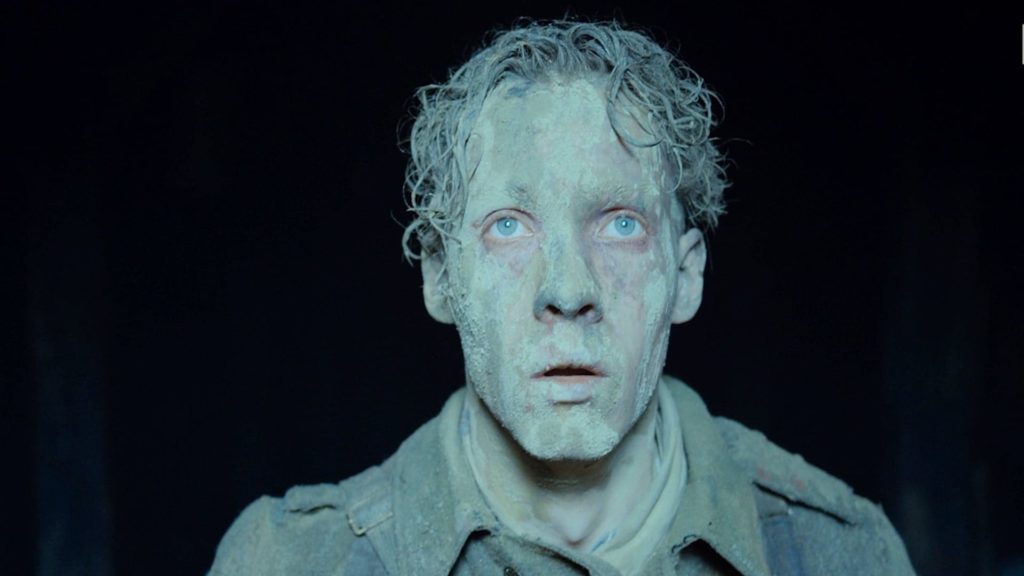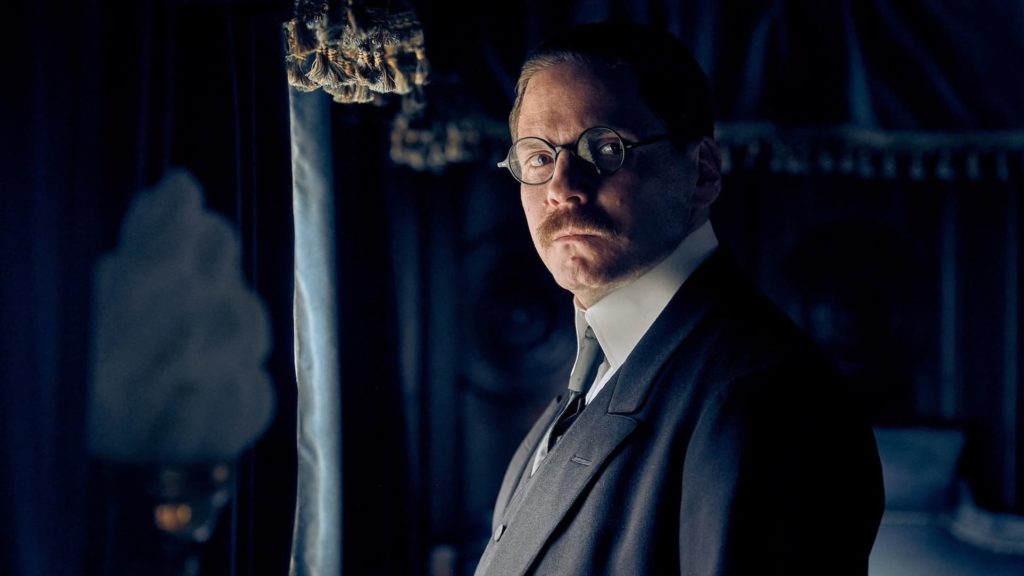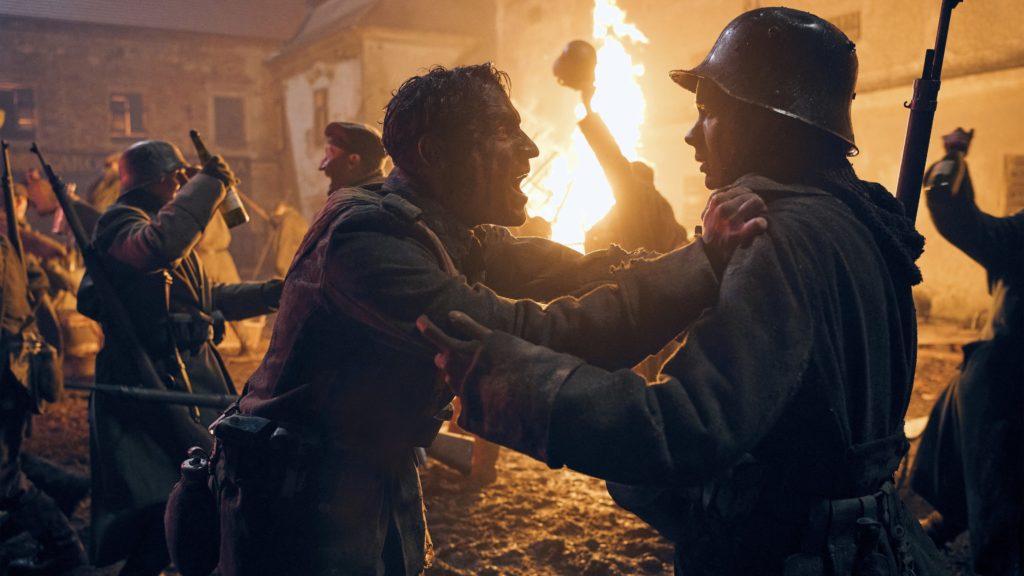All orange on the western teal
It is a perilous path to remake a great film. The number of times it’s been done well is dwarfed by the number of well-intentioned bricks. (And that’s ignoring the crass cash-ins.) Of course, here is where I should acknowledge that, strictly speaking, this All Quiet on the Western Front is not actually a remake of the seminal 1930 film, but a re-adaptation of well-regarded novel. Plenty of remakes try this “not really a remake” spin, but, let’s be honest, every choice this film makes is either in honor of or in reaction to something that the original did. And even if it were conceived and designed in a vacuum, the comparison would be inevitable. Could you imagine watching a Tolkien adaptation without thinking about Peter Jackson’s Lord of the Rings?
This, inevitably, makes the 2022 All Quiet on the Western Front look by-and-large quite jumbled and ineffective. It has a good story at its core and a few ideas on how to freshen the material, but it’s more miss than hit.

For starters, the narrative is missing the clear, elegant arc of the 1930 film. One of the most heartbreaking moments of that film is the revelation that its characters we’ve followed are little more than meat in a grinder when Paul meets the fresh recruits who have backfilled his fallen buddies. But the 2022 adaptation opens with this move: We see from the start that Paul is just an expendable utility. The movie rubs our face in the nihilism of war without the gradually building its crushing weight. It’s just one moment, but it’s emblematic of the type of storytelling this movie traffics in: attempts at cleverness that result in self-sabotage.
Another, even bigger problem, is the scenes with politicians looking down from their ivory towers as they casually negotiate truces and play with soldiers’ lives like they’re poker chips in a friendly card game. There’s an obvious contrast in the quiet comfort of the politicians’ lives versus the soldiers, but it’s braindead-obvious satire that sucks the air out of the film.

The worst part of the movie is the end, though. Through some unwieldy narrative contrivances that make little sense, Paul and his colleagues are forced to go to battle on the eve of an armistice. A rash of characters die at, quite literally, the eleventh hour. “War sure is pointless!” the movie screams in our ears, as if the previous two and a quarter hours didn’t drill home that point. (Speaking of which, this movie is longer than it needs to be; it’s right around The Devil’s Runtime of 2:25.)
Thankfully, the production values of the actual battle scenes are pretty outstanding. This is almost enough to make up for everything else. The trenches are muddy, chaotic messes; the sheer violence over a couple hundred feet overwhelming. The sound and effects are appropriately bone-rattling.
The movie’s biggest innovation, and the best part of the film, period, is its anachronistic EDM score. The thumping pulse captures the dehumanization of the battlefield. The main theme is a non-melodic three note sequence, squawking and dizzying and crushing. I was frankly sad whenever the soundscape pivoted away from it, though I realize the filmmakers were probably wise not to overdo it.

One wart on the battle scenes is the color grading, which is hideous and distracting. Everything is doused in a steely blue-gray that looks plainly digital and overdone. Worse yet, it’s repeatedly accented or contrasted with splashes of orange or saturated yellows. The teal-orange palate is so venomous that you’ll think you’re watching a mediocre 2010s action movie.
But, yeah, the good stuff is good enough to carry it along. The acting is solid, and I even felt sad once or twice. But for as big and weighty as the movie is (and, given the many Oscar nominations, including a near-certain win in Best International Feature Film where Decision to Leave wasn’t even fucking nominated), All Quiet on the Western Front is quite underwhelming.
Is It Good?
Nearly Good (4/8)
Awards, Honors, & Rankings
- The B.A.D.S. (2022) - Best Score (Nominee)
- The B.A.D.S. (2022) - Best Visual Effects (Nominee)
Dan is the founder and head critic of The Goods. Follow Dan on Letterboxd. Join the Discord for updates and discussion.

